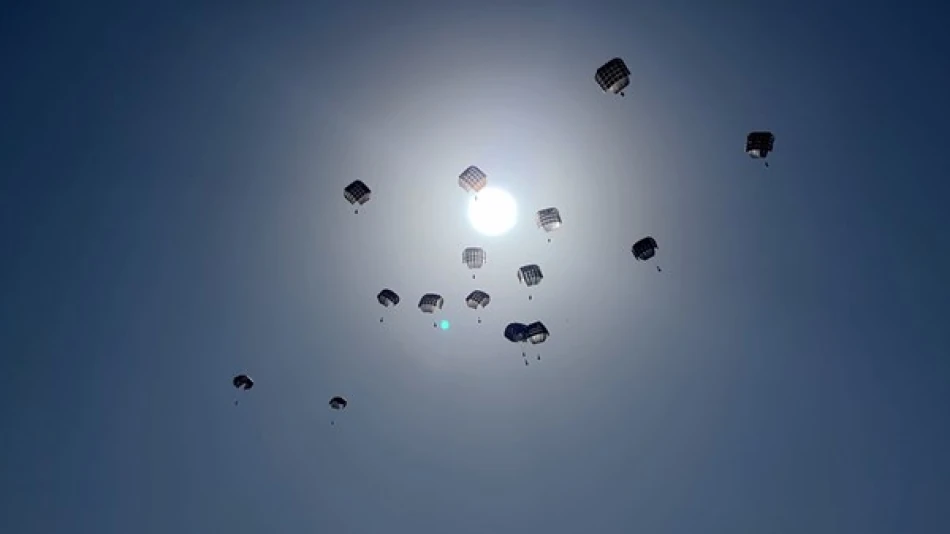
UAE Airlifts Critical Humanitarian Aid to Gaza Amid Ongoing Conflict
UAE Leads International Coalition in Major Gaza Relief Operation, Delivering Nearly 4,000 Tons of Aid
The United Arab Emirates has cemented its position as a regional humanitarian leader by executing its 72nd airdrop mission to Gaza, bringing total aid deliveries to nearly 4,000 tons through a sophisticated international coalition that now includes six nations. This sustained effort represents one of the most comprehensive multinational relief operations in the region's recent history.
Expanding International Partnership Signals Diplomatic Success
The latest mission, conducted under the "Birds of Goodness" initiative within the broader "Chivalrous Knight 3" operation, demonstrates the UAE's growing influence in orchestrating humanitarian diplomacy. The operation now includes Jordan as a key regional partner, alongside European nations Germany, Italy, Belgium, and France, plus Singapore—reflecting a geographically diverse coalition that spans three continents.
This expansion beyond initial partners suggests the UAE's humanitarian framework is gaining international credibility and operational effectiveness. Unlike ad-hoc relief efforts, the systematic numbering and branding of missions indicates a long-term strategic approach to crisis response.
Scale and Logistics Point to Sustained Commitment
The delivery of over 3,972 tons of essential supplies through 72 separate airdrops represents an average of approximately 55 tons per mission—a substantial logistical undertaking that requires significant coordination between multiple air forces and humanitarian organizations.
Strategic Timing and Method
The choice of airdrops over land-based delivery reflects both the practical challenges of ground access and the symbolic importance of maintaining visible humanitarian presence. This method, while more expensive than conventional aid delivery, ensures consistent supply flow regardless of border restrictions or security concerns that often hamper traditional relief corridors.
Regional Leadership Through Crisis Response
The UAE's approach mirrors successful humanitarian strategies employed by other regional powers, but with notable differences. While Saudi Arabia has historically focused on bilateral aid relationships, and Qatar has emphasized direct financial support, the UAE's model emphasizes multilateral coordination and operational visibility.
This strategy serves multiple diplomatic objectives: strengthening ties with European partners, demonstrating regional leadership to neighboring Arab states, and positioning the UAE as an indispensable mediator in Middle Eastern crises.
Implications for Regional Stability
The sustained nature of this operation—now spanning dozens of missions—suggests the UAE views humanitarian leadership as a core component of its regional influence strategy. By maintaining consistent aid flow while other nations' attention shifts between global crises, the UAE builds lasting diplomatic capital and demonstrates reliability as a partner.
The involvement of Emirati charitable institutions alongside government efforts also reflects the country's model of combining state resources with private sector engagement—an approach that has proven effective in previous regional humanitarian crises and positions the UAE as a hub for international relief coordination.
Most Viewed News

 Layla Al Mansoori
Layla Al Mansoori






